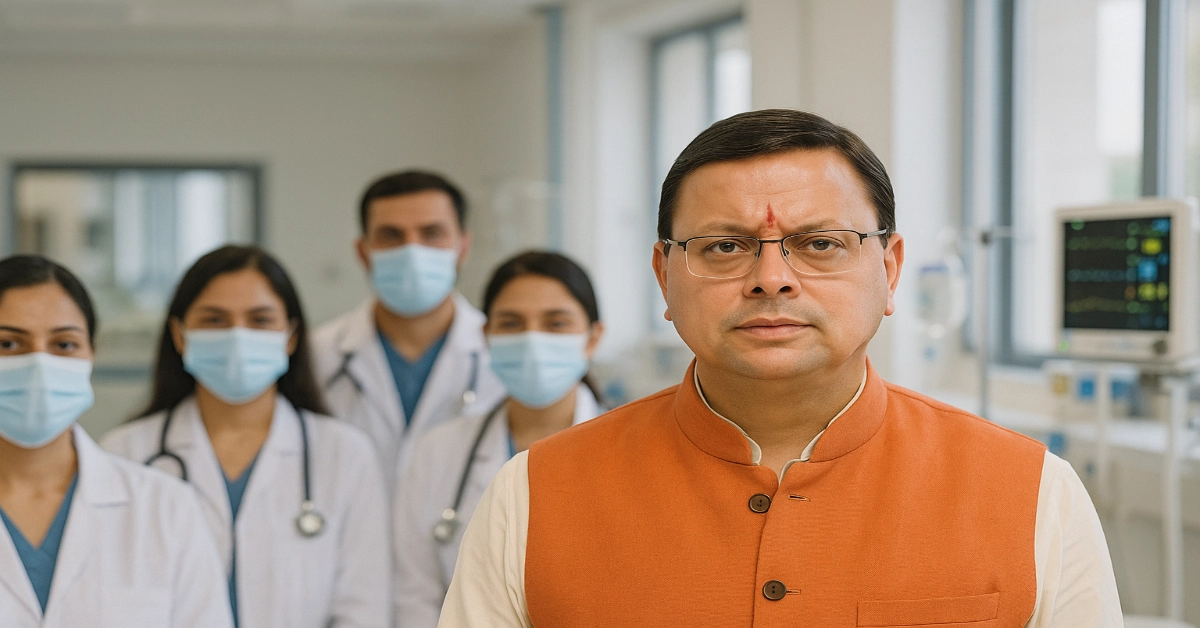The Uttarakhand government plans to open a medical college in every district. Chief Minister Pushkar Singh Dhami said that the state is working toward self-reliance in healthcare and medical training and intends to create opportunities that allow local students to study and specialise in the state itself.
According to Dhami, the government’s top priority is to deliver high-quality medical education across all districts. He said, for years, students from remote and hilly regions of Uttarakhand have had to travel to major cities or other states due to a shortage of medical colleges and limited seats.
The proposed expansion plan aims to reduce this dependency and build a robust academic and healthcare ecosystem within the state itself.
Along with medical colleges, the government is also focusing on nursing and paramedical training infrastructure so that the state produces a well-rounded medical workforce capable of supporting hospitals, clinics, and rural health centers.
Referring to the chief minister’s statement, the state health secretary, Dr Rajesh Kumar, said that new government medical colleges in Rudrapur and Pithoragarh are expected to start operations soon. These institutions will add significant capacity to the existing network of medical colleges and will help address longstanding gaps in faculty availability, infrastructure, and patient-care capabilities.
The government is also working to upgrade facilities, modernise equipment, and accelerate recruitment of specialists and teaching staff.
As of now, Uttarakhand has a total of nine medical colleges, five in the government sector and four in the private sector, offering 1,325 MBBS seats.
Government medical colleges located in Srinagar (Garhwal), Haldwani, Dehradun, Almora, Haridwar, and AIIMS Rishikesh jointly account for 750 MBBS seats and also host 238 postgraduate medical seats, which are essential for producing trained specialists in key disciplines such as surgery, paediatrics, obstetrics, anaesthesia, and internal medicine.
Meanwhile, private institutions such as the Himalayan Institute of Medical Sciences and Shri Guru Ram Rai Institute of Medical and Health Sciences in Dehradun each offer 250 MBBS seats, while the Graphic Era Institute of Medical Sciences and Gautam Buddha Medical College add another 150 seats each to the private sector intake.
The medical education expansion plan arrives at a time when states across India are aggressively working to strengthen their health systems following the lessons learned during the COVID-19 pandemic.
Uttarakhand, with its unique mountainous geography and numerous remote communities, faces inherent challenges in healthcare delivery, including difficult terrains, shortages of doctors in rural areas, and limited specialist services.
Establishing a medical college in every district could transform the healthcare landscape by improving local medical training, promoting district-level research, and increasing the availability of qualified doctors willing to serve in their home regions.
The move is also expected to boost the state’s economic and developmental prospects. Medical colleges do not merely function as academic institutions; they become regional healthcare hubs with advanced hospitals, diagnostic centers, and training facilities.
These hubs attract faculty, specialists, researchers, students, support staff, and medical tourism, thereby contributing to local employment and development. For students from economically weaker backgrounds, district-level medical colleges may offer greater accessibility, reduced travel costs, and more opportunities for academic growth.
The Uttarakhand government’s initiative aligns with the broader national goal of increasing MBBS and postgraduate medical seats across the country so that India can produce adequate numbers of doctors to serve its expanding population.
With rising healthcare demands, growing life expectancy, and emerging health challenges, the expansion of medical education is crucial to sustaining a strong medical workforce for the next decade.
As Rudrapur and Pithoragarh gear up to receive their new colleges, and as plans progress in other districts, the vision of a “medical college in every district” stands as a bold step toward a healthier and more self-reliant Uttarakhand.
If implemented successfully, this initiative could serve as a model for other states, demonstrating how decentralised medical education can play a transformative role in strengthening healthcare access and outcomes.


